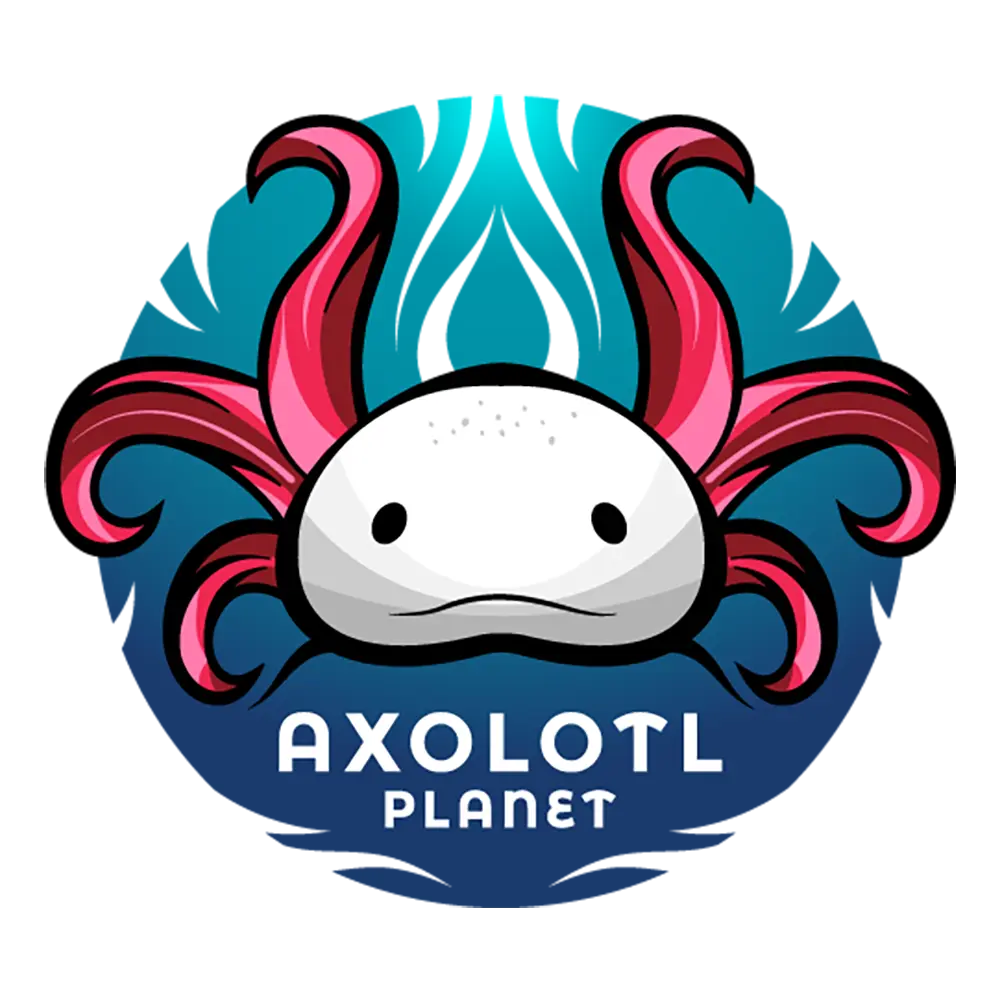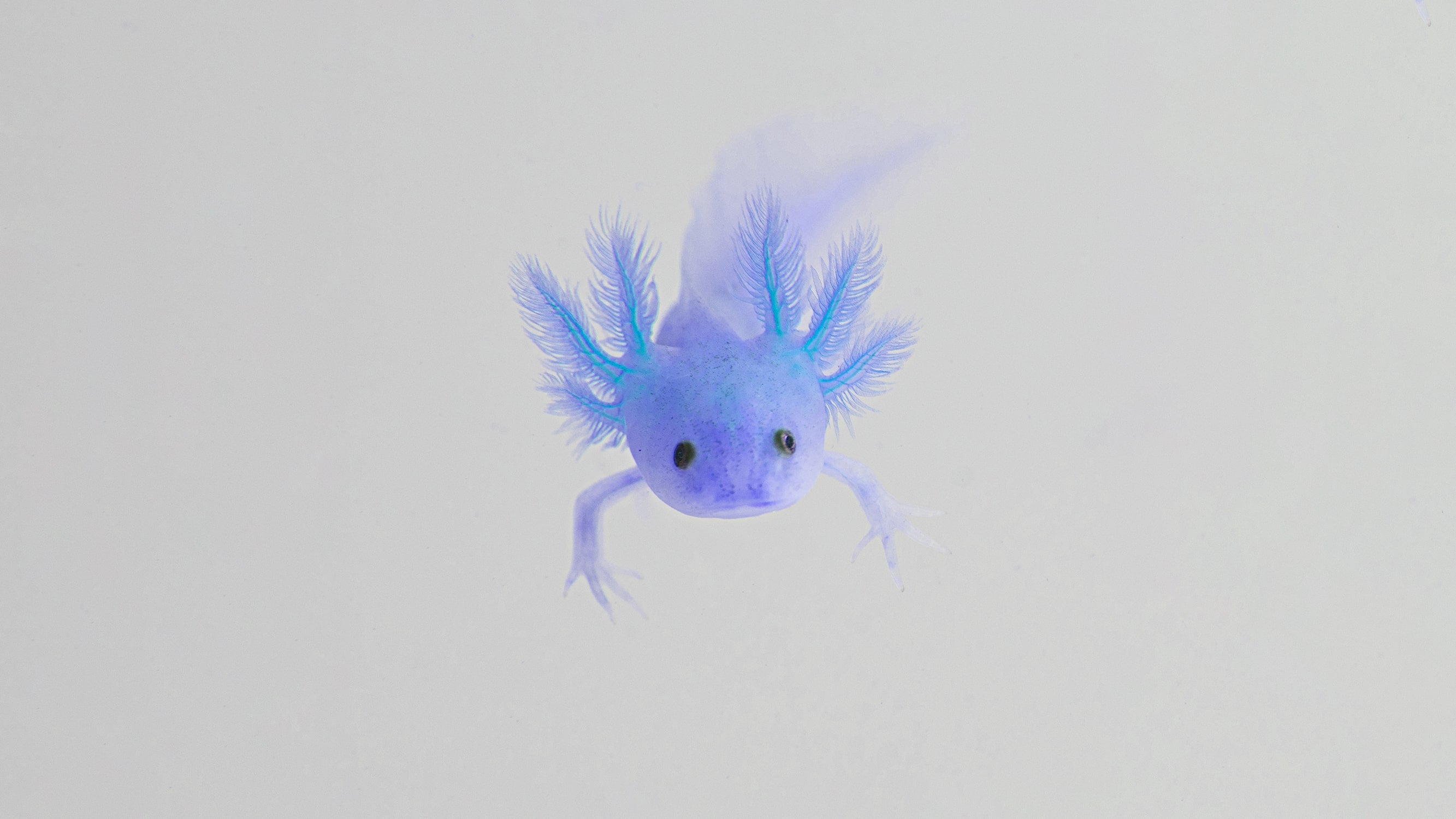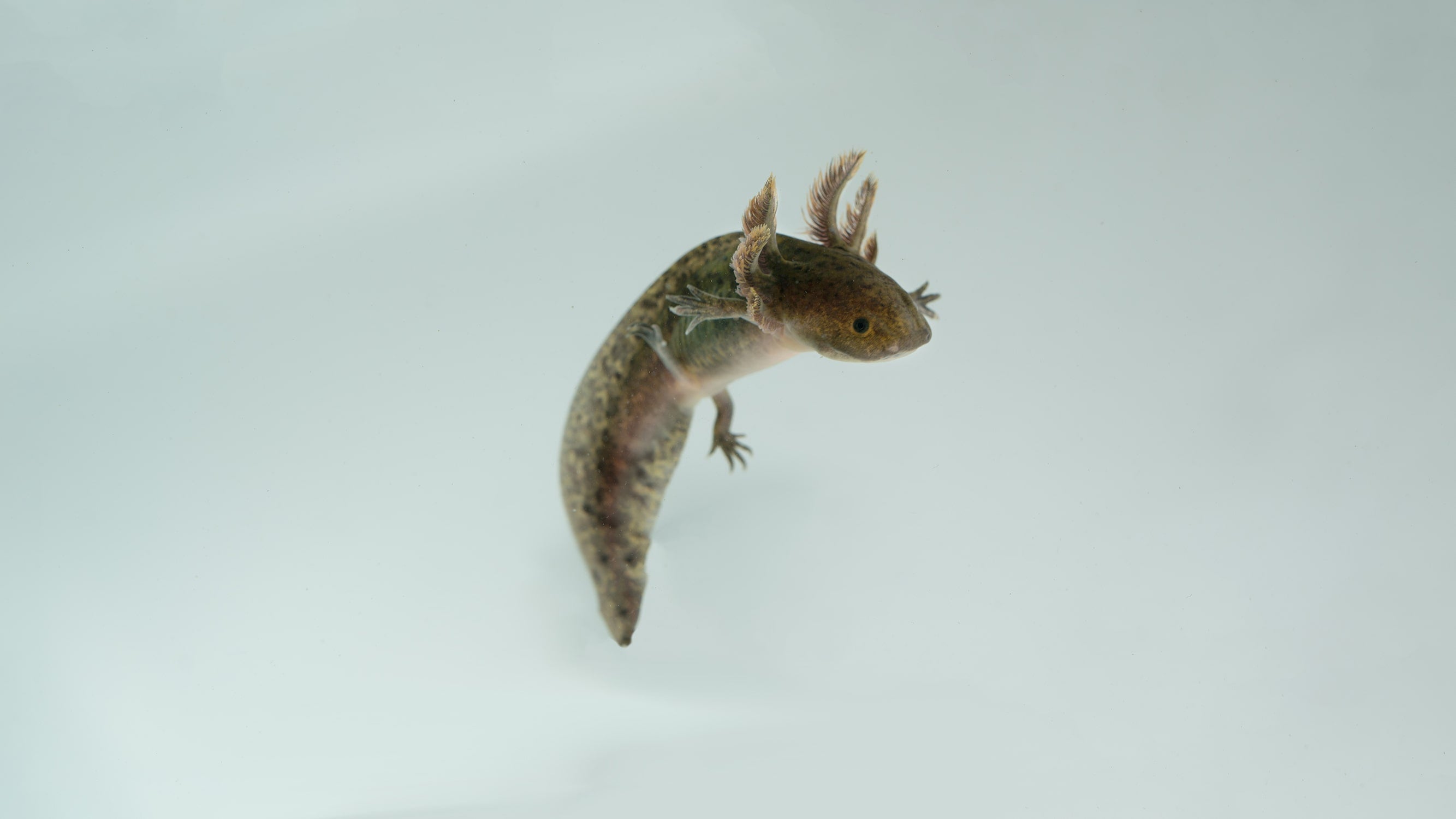Introduction
Axolotls are a species of neotenic salamander that have skyrocketed in popularity in recent years, now ranked as the second most wanted pet, due to their adorable appearance and introduction to one of the most popular video games, Minecraft.



In captivity axolotls are numerous, come in many different colors (or morphs) and are relatively easy to find as pets in places like the UK, Australia, and the Americas. But, when it comes to axolotls in the wild, they are, unfortunately, extremely difficult to find due to the fact that they are native to only one region in Central Mexico and are critically endangered.
So, where do axolotls come from, what has caused them to become endangered in the first place and what can we do to help them? Keep reading to find out!
Where Do Axolotls Come From?
Axolotls originate and are endemic to Mexico. As such, they have been given the nickname, “the Mexican Walking Fish”, despite the fact that axolotls are not fish, but are actually amphibians. In fact, they are a special type of amphibian that biologists call “neotenic” or “paedomorphic”, which means they remain in the larval stage of salamander development for their whole life span, even becoming sexually mature in their larval state, never going through the metamorphosis to live on land. Because of this, they are one of the only fully aquatic salamanders in the world, and their inability to survive out of water is why they were, historically, only found in a series of connected lakes in one region in the highlands of Central Mexico. These lakes were Lake Texcoco, Lake Zumpango, Lake Xaltocan, Lake Xochimilco, and Lake Chalco. Historically, these lakes were rich in food and nutrients, allowing the species to thrive and propagate along their shores in relative peace, thus never giving the species a reason to evolve in a way that would necessitate them to populate other region.

The lakes were first settled in the 13th century by the Mexica people, who we know as the Aztecs. They built Tenochtitlán, the capital city of their empire, on an island in Lake Texcoco. The Aztecs were brilliant architects who spread their great city along the lake, building artificial islands, called chinampas, and a system of canals to agriculturally support the population of their empire. This had the added effect of greatly expanding the shorelines of the lakes, allowing for axolotls to thrive within these habitats, vastly increasing their population numbers and allowing them to rapidly become a culturally significant animal to the Aztec people.
Axolotls and the Aztecs
The Aztecs were the first people to discover, name, and utilize axolotls. In fact, the word “axolotl” originates from the Aztec language, Nahuatl. Most English speakers pronounce the word as, “Ak-Suh-Lot-Uhl”, while the Spanish pronunciation is Ajolote, or “Ah-Hoh-Loh-Tey”. However, the original Nahuatl pronunciation is, actually, “Ah-Shoh-Loat”.
The axolotl played an important role in both Aztec and later Mexican culture, being utilized as a staple food source for centuries. In the Florentine Codex Book 11, one of the first ethnographic works written about the Aztecs by the Spanish Franciscan friar Bernardino de Sahagún, the axolotl is referred to as comida de los señores, or “food for the lords”, and is compared in texture and flavor to eel. In the festival of Izcalli, which celebrated growth and re-birth, axolotls were consumed in tamales, and children were encouraged to to throw axolotls into the fire of their hearths at home.
The axolotl is also depicted alongside two other sacred foods in a creation myth involving the god Xolotl, who axolotls are named after, in Book 7 of the Florentine Codex. In the story the gods of the Aztecs have created the Fifth Sun and realized quickly that it did not move. Without the Sun being able to move, humanity could not survive. So, the gods collectively decided to sacrifice themselves in order to get the Sun to move. Xolotl was to be the executioner of all the gods and, once he was done sacrificing everyone, he was to sacrifice himself. In some versions of the myth, Xolotl follows through with his duty and sacrifices himself at the end. In other, more popular, versions of the myth, however, he is distraught at the thought of death and cries so hard his eyes fall out. Then, he evades sacrifice by turning into three sacred foods. First, he becomes a maize plant, then an agave plant, and last he becomes an axolotl. Unfortunately, his trickery is discovered and he is eventually sacrificed by his twin, the god Ehecatl-Quetzalcoatl.
The Decline of the Axolotl
The beginning of the decline of the axolotl population began as early as 1521, when the Spanish conquistadors, led by Hernán Cortés, conquered the Aztecs and the great city of Tenochtitlán fell. Cortés and his men destroyed the Aztec city and upon its ruins Mexico city was established. The dams, dikes, and other complex hydraulic structures the Aztecs had constructed to safely manage water levels were destroyed during the Spanish conquest and never rebuilt. As a result, flooding rapidly became a devastating problem for the new city.
The solution to alleviate the flooding would spell doom for the local axolotl populations and start them on the path towards critical endangerment. From the 1600s to the 1900s the people of Mexico City began the work of draining Lake Texcoco. Various channels and tunnels were constructed, the most notable project being the construction of the Drenaje Profundo (“Deep Drainage System”). This system was a vast and complex series of tunnels that spanned hundreds of kilometers, built far below the lake, and drained the water out of the basin. As a direct result of this drainage, much of the land around Mexico City has become semi-arid and the city suffers from lack of water. Today, Lake Texcoco no longer exists except as an area surrounded by salt marshes that cover the lake bed and there are only small remnants of the lakes Xochimilco, Chalco, and Zumpango left. Because of the severe degradation of their natural environment, the axolotl population, as well as many other indigenous species, have been greatly reduced.

This image depicts the disappearance and degradation of the lakes of Central Mexico due to urban expansion and draining.
Unfortunately, environmental degradation is not the only obstacle to the survival and longevity of wild axolotls. In the 1970s, Chinese carp and African tilapia were introduced to lake Xochimilco as a source of food for the rapidly increasing population of people. However, the waters of lake Xochimilco have become heavily polluted over the years with heavy metals from treated water being pumped into the nearby canals and from raw sewage dumping directly into the lake from illegal dwellings on the chinampas. Now, because the populations of tilapia and carp are no longer sought out as a food source, their populations have exploded. The carp and tilapia out compete axolotls for sparse food resources and they also consume axolotl eggs and juveniles, making successful reproduction exceptionally difficult for axolotls. As a result, it has been estimated that there are only 1000 or less axolotls left in the wild.
Axolotl Conservation Efforts and How You Can Help
Today there are a variety of conservation efforts to save the wild population of axolotls that still remain in the remnants of lake Xochimilco. Most of these efforts involve raising awareness and working towards restoring the axolotl’s natural habitat after so many years of degradation. Thankfully, many people are invested in protecting this species, so there is hope that axolotls will be brought back from the brink of extinction in their natural habitats.
One of the leading experts on the conservation of axolotls is Richard Griffiths, a professor of biological conservation at the University of Kent. Griffiths and his team have developed and executed an action plan with the Darwin Initiative to raise awareness about the plight of axolotls to local communities through education programs, workshops and public meetings. This program has been an overall success, with further projects growing out of their initial efforts.
Another notable researcher who spearheads efforts to save native axolotls by restoring their natural habitats is Luis Zambrano, a biologist at the National Autonomous University of Mexico (UNAM). Zambrano has been responsible for cataloging the population numbers of axolotls over the years. He has had success in recruiting the local populace to his cause, encouraging local farmers to utilize traditional agricultural cultivation methods, such as chinampas, to create sanctuaries for axolotls in Lake Xochimilco. These traditional farming methods don’t use fertilizers or pesticides that contribute to pollution and go a long way in conserving the fragile ecosystem of Lake Xochimilco.
So, what can you do to help save the axolotl? Well, the most critical factor in the survival of axolotls is the restoration of their natural habitat. Only 2% of the water in their native lands remains today. Donating and volunteering with projects and organizations that are directly involved in restoring the wetlands of Lake Xochimilco is the best way to help. Organizations like Humedalia allow you to volunteer, live in nature, and gain experience in animal management, organic farming, and ecological restoration. Humedalia works directly with UNAM and UAM and seeks true sustainable development practices, focusing on the development of chinampas to preserve the environment as well as enrich the lives of local residents.
Conclusion
The reasons that axolotls are critically endangered, and the hurdles we face to save them, are complex and numerous. It will take many years and a concerted effort from scientists, locals, and the Mexican government to truly progress to a point where the axolotl is no longer an endangered species. We hope you now have a better understanding of the unique and dire position that the axolotl is in and do your part in raising awareness to help these beautiful animals remain in existence!
Sources
IUCN SSC Amphibian Specialist Group (IUCN SSC). “Axolotl: Ambystoma Mexicanum.” IUCN Red List of Threatened Species, 23 Oct. 2019, https://www.iucnredlist.org/species/1095/53947343. Accessed 13 Jan. 2023.
“Axolotl conservation project launched in Mexico City.” Mexico News Daily, 17 February 2022, https://mexiconewsdaily.com/news/axolotl-conservation-mexico-city/. Accessed 27 May 2022.
Bowditch, Charles P. “Xolotl.” Wikipedia, https://en.wikipedia.org/wiki/Xolotl. Accessed 27 May 2022.
Burnett, Victoria. “An Aquatic Paradise in Mexico, Pushed to the Edge of Extinction (Published 2017).” The New York Times, 22 February 2017, https://www.nytimes.com/2017/02/22/world/americas/mexico-city-canals-xochimilco-chinampas.html. Accessed 27 May 2022.
“Chinampa.” Wikipedia, https://en.wikipedia.org/wiki/Chinampa. Accessed 27 May 2022.
Debczak, Michele. “Axolotls As Pets Are in High Demand.” Mental Floss, 29 October 2021, https://www.mentalfloss.com/article/651087/most-wanted-pets. Accessed 27 May 2022.
“Defra, UK Darwin Initiative.” The Darwin Initiative, https://www.darwininitiative.org.uk/project/DAR11018/. Accessed 27 May 2022.
“Florentine Codex.” Wikipedia, https://en.wikipedia.org/wiki/Florentine_Codex. Accessed 27 May 2022.
Hartman, Adam. “Earth Day 2020.” Bell Museum, 20 April 2020, https://www.bellmuseum.umn.edu/blog/earth-day-2020/. Accessed 27 May 2022.
“Lake Texcoco.” Wikipedia, https://en.wikipedia.org/wiki/Lake_Texcoco. Accessed 27 May 2022.
Lewin, Walter. “Café con Nawatl Episode 6: How do you pronounce Axolotl?” YouTube, 2 October 2018, https://youtu.be/Ka0Fj6P3T-w. Accessed 27 May 2022.
Mursell, Ian, and Miguel Covarrubias. “Axolotl.” Mexicolore, https://www.mexicolore.co.uk/aztecs/flora-and-fauna/axolotl. Accessed 27 May 2022.
Pulido, Carlos. “Regeneración del Rio La Piedad_Resumen Ejecutivo by Taller 13.” Issuu, 28 June 2011, https://issuu.com/taller13/docs/regeneracion_del_rio_la_piedad_resumen_ejecutivo. Accessed 27 May 2022.
Rapp, Joshua. “Creating refuges for axolotls in Mexico City.” The Wildlife Society, 6 December 2021, https://wildlife.org/creating-refuges-for-axolotls-in-mexico-city/. Accessed 27 May 2022.
Tate, Carolyn E. “The axolotl as food and symbol in the Basin of Mexico, from 1200 BC to today.” Academia.edu, https://www.academia.edu/36916975/The_axolotl_as_food_and_symbol_in_the_Basin_of_Mexico_from_1200_BC_to_today. Accessed 27 May 2022.
“Xolotl – The Underworld Dog God of the Aztecs.” Ancient Origins, 29 April 2018, https://www.ancient-origins.net/myths-legends-americas/xolotl-underworld-dog-god-aztecs-009970. Accessed 27 May 2022.
@axolotlplanet Mission failed successfully 🥲 #axolotlplanet #axolotl #axolotls #axolotlsoftiktok #fishtank #aquarium #fishtok #fishcontent ♬ original sound - Matthew Rincon





Leave a comment
This site is protected by hCaptcha and the hCaptcha Privacy Policy and Terms of Service apply.